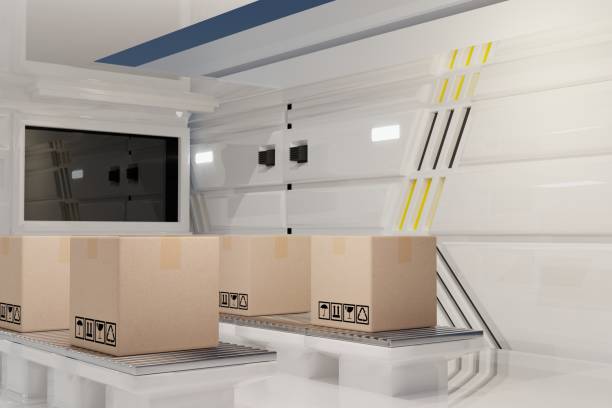Packing Jobs: Duties, Skills, Safety, and Career Paths
Packing jobs power the final step of the supply chain—getting goods safely from warehouses or production lines to customers. This article explains the roles, environments, skills, and progression options for packing work worldwide. It is informational only and not a listing of current vacancies. Availability, titles, and requirements vary by employer and location, so always verify details with local services or trusted job boards in your area.

What do packing jobs involve?
Packing roles center on preparing items for shipment or storage while protecting product quality. Common tasks include assembling boxes, wrapping and cushioning items, labeling, sealing, and staging parcels for pickup. In many workplaces, packers collaborate with pickers who retrieve items, then confirm orders, scan barcodes, and ensure the correct products, counts, and lot codes are present before packing. Accuracy matters: even a small labeling error can cause returns, compliance problems, or delays downstream.
Industries hiring packers span e-commerce, third-party logistics (3PL), manufacturing, food and beverage, and pharmaceuticals. Workflows can be highly standardized for high-volume items or more customized for fragile goods, kits, and gift sets. Employment may be seasonal in peak retail periods, or permanent in manufacturing and essential goods. Titles vary—packer, packing associate, picker/packer, fulfillment associate—but the core responsibility is consistent: pack efficiently and protect items in transit.
Skills and basic qualifications
Successful packers combine speed with care. Core skills include attention to detail, manual dexterity, time management, and the ability to follow standardized work instructions. Basic math helps with counting and measuring dunnage (padding materials). Comfort with handheld scanners, warehouse management systems (WMS), and shipping software is increasingly important, even in entry-level roles, because scanning and printing labels often drive inventory and tracking accuracy.
Physical requirements commonly include standing for long periods, repetitive motions, and lifting packages within defined weight limits. Employers may provide training on safe lifting, ergonomics, and proper use of personal protective equipment (PPE) like gloves or safety shoes. A high school diploma or equivalent is frequently preferred but not always required. Background checks or pre-employment screenings are common in industries handling high-value or regulated products. Forklift certification is usually not necessary for packers but can expand opportunities when cross-trained with material handling.
Schedules, safety, and work environment
Work schedules vary widely: day, swing, and night shifts are typical, and overtime can arise during peak demand. Environments range from climate-controlled facilities to cooler or warmer areas depending on the products—cold chain items, for instance, may require warm clothing and careful handling to maintain temperature integrity. Noise levels can be moderate where machinery is used, and safety signage and floor markings guide traffic and workflows.
Safety is a shared priority. Employers often train staff in hazard communication, lockout/tagout boundaries for nearby equipment, emergency procedures, and ergonomic best practices. Simple habits—keeping stations tidy, using the right dunnage for fragile items, and scanning properly—reduce errors and injuries. Many teams rotate tasks to minimize repetitive strain, and supervisors monitor throughput to balance speed with safety and quality.
Finding legitimate roles in your area
Legitimate packing jobs are posted by employers such as manufacturers, logistics firms, and retailers, as well as by staffing agencies offering local services. Company career pages, reputable online job boards, and community employment centers are common sources. To demonstrate fit, tailor your resume to highlight relevant productivity metrics (for example, orders packed per hour), familiarity with scanners or WMS tools, and any safety or quality training. Clear, concise descriptions of past warehouse or retail tasks help applicant tracking systems recognize your experience.
Watch for red flags: requests for upfront payment, vague job descriptions that avoid naming an employer, or promises of unusually high pay for minimal work. Genuine employers explain shift expectations, physical requirements, and screening processes. During interviews, candidates can expect questions about accuracy under time pressure, experience with labels and packaging materials, and how they handle repetitive tasks while maintaining quality.
What is bulk_create_keyword?
You may see the term bulk_create_keyword in some web content. This phrase is a placeholder used in certain content templates and is not a recognized job title, certification, or industry term. If you are searching for roles, use conventional keywords such as “packer,” “packing associate,” “picker/packer,” or “fulfillment associate,” along with phrases like “in your area” to find local opportunities. In practice, recruiters and HR systems rely on standard terminology, so focusing on established job titles and skills will yield more accurate results than searching for placeholder phrases like bulk_create_keyword.
Growth and career paths
Packing roles can be an entry point into broader logistics and manufacturing careers. With strong performance and reliability, packers may advance to team lead or shift lead positions, supervising throughput and training new hires. Cross-training opens doors to inventory control, quality assurance, shipping/receiving, kitting, or returns processing. In facilities with automated equipment, learning to operate or maintain machinery can lead to roles like machine operator or maintenance assistant.
Soft skills matter for advancement: consistent attendance, clear communication, and a willingness to document and improve processes stand out. In many organizations, internal mobility programs support skills development—short courses in warehouse software, quality methods, or safety can boost prospects. While automation continues to reshape fulfillment, human judgment remains essential for quality checks, exception handling, and specialized packaging, providing ongoing pathways for growth.
Conclusion
Packing jobs blend precision, pace, and safety to safeguard products on their final journey to customers. The work spans many industries and schedules, with core competencies in accuracy, basic technology use, and ergonomic handling. This article provides general guidance—not current job listings—so anyone exploring opportunities should verify role details with employers or trusted resources and use standard job titles when searching.






